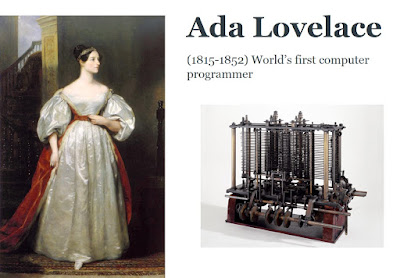Celebrating Female Scientists & Engineers Throughout History
No matter who the audience, the workshops are always preceeded by a quick look at some heroes of Science, Technology, Engineering & Maths (STEM) throughout history.
In a perfect world, we wouldn't need to highlight some of the fantastic achievements of female scientists, artists, engineers, philanthropists etc. for their outstanding contribution to society - because they would celebrated as great scientists, artists, engineers etc. simply for their outstanding contributions to society, along with their male contemporaries.
Unfortunately, this is still not yet the world in which we live. Although there have always been women making incredible contributions to science, engineering, technology and maths their names are often forgotten where their male counterparts are remembered. Turing has become a household name in maths & computing but what about Lovelace? Watson & Crick are credited with the discovery of DNA but what about Rosalind Franklin? We've all learned about Pythagorus and his theorem in school but what about Theano and her golden rule?
It's all about visibility. No-one in today's society would deny the fact that women can do great research (though it was embarassingly recently that this was the case) - but if we live in a society where people can barely name a single female scientist from history, where women are never expected to enter a STEM field, where the lost contributions to our technological and intellectual development of nearly 50% of the population isn't even missed, then how can we ever hope for it to change? (For more musings on the effects, reasons behind and ways to combat gender and other imbalances, see here.)
So here are some of my heroes! For more information on any of these fantastic folk, see, for example, posts on the Hungry Women Blog '5 Great Scientists & Engineers' and '5 More Great Scientists & Engineers' and all the other great bits of info that they link you to!
Note that I've not yet had time to write about everyone here on the blog linked above or make the posters available here - but fear not, as they will all (and more) be up there ASAP!















No comments:
Post a Comment